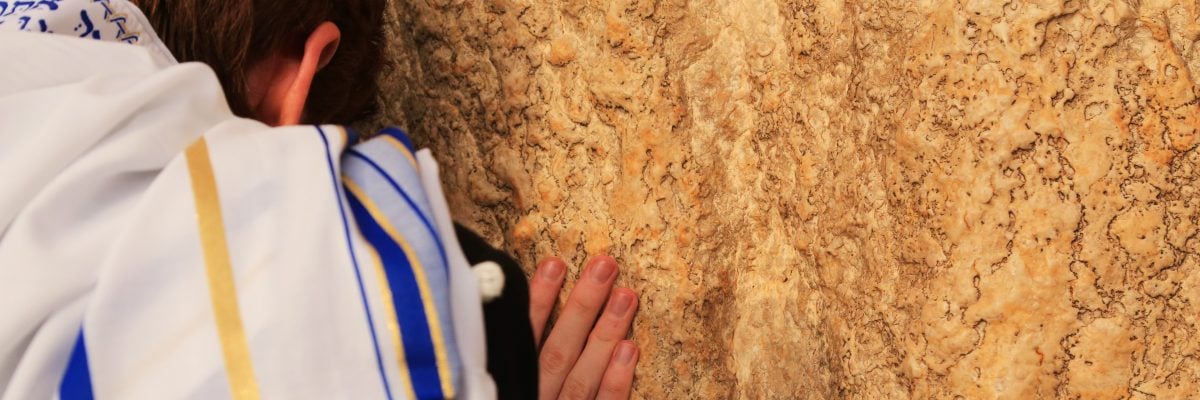
Jesus prophesied that the Jerusalem temple would be destroyed within a generation, and it was. Jewish rebels began a war against the Romans in A.D. 66, and four years later the temple lay in ruins.
Will it ever be rebuilt? Many Jews and Christians think so, even claiming that this must happen in order for certain prophecies to be fulfilled.
My fellow Catholic apologist Tom Nash isn’t one of them. In a recent article at Catholic World Report, he argues that the temple will never be rebuilt. Let’s look at what he has to say.
Advocates of Rebuilding the Temple
Nash takes a special interest in a group of people known as premillennialists, who believe that, after the Second Coming, Jesus will reign on earth for a thousand years or more before the Last Judgment and the beginning of the eternal order.
In recent years, many premillennialists have also belonged to a school of thought known as dispensationalism, and dispensationalists commonly have certain additional beliefs, including:
- There will be a rapture of believers several years before the Second Coming.
- The Jerusalem temple will be rebuilt before the Second Coming.
- The Antichrist will proclaim himself to be God in the Jerusalem temple.
- After the Second Coming, there will also be a temple in Jerusalem (either the same one, a reconsecrated one, or a new one).
- During the millennium, animal sacrifices will be offered at this temple in memory of what Jesus did on the cross.
As some of their characteristic beliefs indicate, dispensationalists hold that the Jerusalem temple will be rebuilt in order for certain prophecies to be fulfilled. They are not the only ones who believe this. As Nash indicates, many Jews also believe that there will be a future temple. Some think this will not happen until the future, messianic age. Others think it could happen sooner. Some Jews also would favor reinstituting animal sacrifices at the temple, while other Jews would prefer it to serve simply as a house of prayer.
Catholic Teaching
The Catholic Church rejects premillennialism (see CCC 676, where it is treated under the name “millenarianism”). It teaches that there will be a future appearance of the Antichrist that will precede the Second Coming. When Jesus returns, however, the Last Judgment and the eternal order will begin immediately.
The Church does not take a position on whether there will be a rebuilt temple.
Nash’s view that there will not be one is a legitimate Catholic theological opinion. However, so is the contrary view. As we will see, respected Catholics have advocated the view there will be a future temple.
The Fulfillment Argument
In his article, Nash cites several factors pointing to the fact that Jesus fulfilled the sacrificial system of the Old Testament, and so animal sacrifices are no longer necessary. His fundamental conclusion is correct: Jesus fulfilled the Old Testament sacrificial economy.
One can even strengthen his argument, for Jesus not only predicted the destruction of the temple (Mark 13), he also identified himself with the temple (John 2:13-22). The destruction of the temple thus in some ways parallels the destruction of Jesus’ body on the cross, and Jesus takes the place of the temple for Christians (Rev. 21:22).
The main difficulty comes when Nash draws this conclusion:
So to think that God would authorize the reinstitution of temple sacrifices is to misunderstand his salvific work and also, unwittingly, blaspheme Jesus, who rendered void the need for such inferior sacrifices.
Blasphemy (even unwitting) is a harsh charge, and it is not clear that it would be warranted in the case of dispensationalists. They think millennial sacrifices will not be needed but that they will be a way to commemorate what Jesus did on the cross. Of course, Catholics make even stronger claims than this regarding the Eucharist, which not only commemorates but re-presents the sacrifice of the cross.
The key problem is that Nash seems to assume that God must “authorize the reinstitution of temple sacrifices” for the temple to be rebuilt. But many things happen in God’s prophetic plan that aren’t positively willed by God (e.g., the appearance of the Antichrist and his evil activities). Jesus certainly fulfilled the Old Testament sacrificial economy, and God does not will that animal sacrifices resume, but that doesn’t mean that at some point some Jews won’t build a temple in Jerusalem—whether as a house of prayer or a house of sacrifice.
Thus, if there are prophecies of a future temple, they need to be taken seriously.
The Julian Argument
Nash also cites the example of the Roman emperor Julian the Apostate, who tried to rebuild the temple in A.D. 363 but who was thwarted, with reports of unusual and possibly supernatural events playing a role in his decision to cease his efforts.
This failed attempt to rebuild could be taken as evidence for Nash’s position that God does not will the temple ever to be rebuilt, but it could also be taken as evidence that it was not God’s will to allow the temple to be rebuilt then.
Julian the Apostate can be seen as a forerunner of the Antichrist, and his plan to rebuild the temple as a foreshadowing of what the Antichrist will do. Julian didn’t get to carry the project through simply because it wasn’t yet God’s time.
St. Paul on the Temple
Are there prophecies that point to a future temple? A famous passage in St. Paul reads:
Let no one deceive you in any way; for [the day of our Lord Jesus Christ] will not come, unless the rebellion comes first, and the man of lawlessness is revealed, the son of perdition, who opposes and exalts himself against every so-called god or object of worship, so that he takes his seat in the temple of God, proclaiming himself to be God (2 Thess. 2:3-4).
Interpreters have proposed a number of possibilities for what temple Paul is referring to, including God’s heavenly temple, the Church, or a purely metaphorical temple. However, one of the strongest possibilities is that he was referring to the Jerusalem temple.
This is especially likely given the recent background to this letter, which was written around A.D. 50. Less than a decade earlier, the Roman emperor Caligula, who claimed divine honors, had attempted to have his statue put in the Jerusalem temple—an event that Caligula’s assassination prevented.
This plan produced a major convulsion in the Jewish community, and the thought of a satanic “man of lawlessness” taking his seat “in the temple of God” and “proclaiming himself to be God” is naturally understood in terms of a world ruler doing this in the Jerusalem temple.
Since this didn’t happen before A.D. 70, the prophecy could point to a future temple—and Caligula, like Julian, could be a forerunner of the Antichrist.
Church Fathers Weigh In
So what happened after the temple was destroyed? How did the Church Fathers interpret Paul’s prophecy?
They had a variety of views. Some thought the passage applied to the Church, but others simply inferred that the temple would be rebuilt and that the Antichrist would take his seat in Jerusalem. Advocates of this view include:
- St. Irenaeus of Lyons (Against Heresies 5:25:4 and 5:30:4)
- St. Hippolytus of Rome (Antichrist 6)
- St. Cyril of Jerusalem (Catechetical Lectures 15:15)
We thus have a mixed tradition, with some Fathers and Doctors (Cyril is both) advocating the view that Paul’s prophecy points to a future Jerusalem temple.
And so, Nash’s view that the temple will never be rebuilt should not be ruled out. But in light of Paul’s prophecy and its historical background, and the mixed tradition in the Church Fathers, the possibility of a future temple should be taken seriously.



